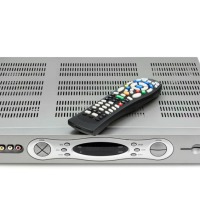DVR, or digital video recorders, are becoming increasingly common in the home. They record all your favorite programming, and save it for you to watch at your convenience, without the hassle of setting up videotapes of DVDs to record. Instead the information is stored on a hard drive, much like the files on a computer. Understanding how to use DVR, and what types of DVR are available can make every consumer more prepared to get the most out of their home theater system.

How to Use DVR
Every DVR is a little different, depending on the carrier it is provided through, but the process is always basically the same.
Step 1: Find the TV program or movie you wish to record on the cable menu or schedule.
Step 2: Set the program to record. This should be as easy as highlighting the right box on the programming guide and pressing the “record” button.
Step 3: Decide whether you want to record the programming a single time, or each week at the same time. The one-time record feature is ideal for movies, while the scheduled record is more appropriate to favorite TV shows that air on a recurrent basis.
Step 4: Manage your memory space well. Remember to delete programming that you have watched and are not likely to watch again. Because the DVR uses a memory system similar to a computer, it can easily fill up, making it impossible to record future programming until something is deleted.
Types of DVR
- Stand Alone DVR
- This is a DVR system that is purchased independent of a carrier. While most DVR systems are provided by cable or satellite networks, DVR boxes can be purchased which are not associated with the TV service provider. These devices attach to the television directly, and they are compatible with any antenna, cable or satellite system.
- Cable Box
- Cable box DVR are provided by satellite or cable companies, and are a part of the primary system. In these cases the DVR system is preinstalled in the main cable box, used to receive satellite transmission in the home, and is run by the basic remote control unit provided by the carrier.
- Hard-drive Based
- Hard-drive based DVRs connect to the computer, and allow programming to be saved directly to the computers hard drive. While this system does typically provide significantly more storage space, it also requires specialized hookups, like a computer TV tuner card. Unlike other DVR types, there is no additional charge for the service after its initial purchase.
Every DVR is a little different. Users should read the owner’s manual and become familiar with the system controls before starting to record programming with their new DVR. The benefit of using DVR are numerous. It gives you greater control over your TV viewing, allowing you to stop, start, and pause every program during play, just like a DVD or VHS recording. It also allows you to store TV shows long term, so that watching your favorite programming fits into any schedule. Learn more about what DVR options are available in your area, and how it can benefit you personally today.
